300 scholarly books by Brandeis University Press and 17
have author last names that start with H
300 scholarly books by Brandeis University Press and 17
300 scholarly books by Brandeis University Press
17 have author last names that start with H have author last names that start with H
17 have author last names that start with H have author last names that start with H
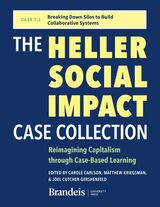
CASE 7.1 Breaking Down Silos to Build Collaborative Systems
Lauren Hajjar
Brandeis University Press, 2024
This simulation presents the challenge of integrating regional health system payments in a context where parties each operate independently and the social determinents of health are incompletly addressed. Set in New Hampshire, respoinding to a fedearal initiative, the simulation features five roles, each essential to the integraiton challenge. Ths case provides students with an experiential view on the challenge of breaking down silos in social impact service delivery.
[more]
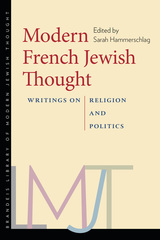
Modern French Jewish Thought
Writings on Religion and Politics
Sarah Hammerschlag
Brandeis University Press, 2018
“Modern Jewish thought” is often defined as a German affair, with interventions from Eastern European, American, and Israeli philosophers. The story of France’s development of its own schools of thought has not been substantially treated outside the French milieu. This anthology of modern French Jewish writing offers the first look at how this significant and diverse body of work developed within the historical and intellectual contexts of France and Europe. Translated into English, these documents speak to two critical axes—the first between Jewish universalism and particularism, and the second between the identification and disidentification of French Jews with France as a nation. Offering key works from Simone Weil, Vladimir Jankélévitch, Emmanuel Levinas, Albert Memmi, Hélène Cixous, Jacques Derrida, and many others, this volume is organized in roughly chronological order, to highlight the connections linking religion, politics, and history, as they coalesce around a Judaism that is unique to France.
[more]
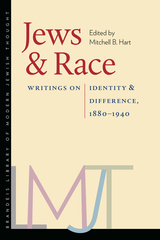
Jews and Race
Writings on Identity and Difference, 1880–1940
Mitchell B. Hart
Brandeis University Press, 2011
Many people think of Jews as victims of a particular sort of racism, not as active participants in the development of racial thinking in the nineteenth and twentieth centuries. Yet many Jews did take up racial discourse and used it to analyze Judaism, Jewish history, and the contemporary condition of world Jewry. Race discourse generated by Jews was in part apologetic, a response to racial antisemitism; however, it also served other political and ideological needs. Focusing primarily on works written at the height of the racial hygiene and eugenics movements in Europe and North America, this diverse anthology shows how Jewish scholars and popular writers in Europe, North America, and Palestine developed racial interpretations of Judaism and Jewish history, thereby raising fascinating and thorny issues about the nature and history of racial discourse in Europe and America. Designed for class adoption, the volume contains annotations and an introduction by the editor.
[more]
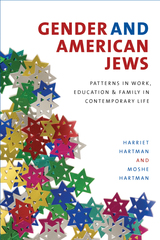
Gender and American Jews
Patterns in Work, Education, and Family in Contemporary Life
Harriet Hartman
Brandeis University Press, 2009
In Gender and American Jews, Harriet Hartman and Moshe Hartman interpret the results of the two most recent National Jewish Population Surveys. Building on their critical work in Gender Equality and American Jews (1996), and drawing on relevant sociological work on gender, religion, and secular achievement, this new book brings their analysis of gendered patterns in contemporary Jewish life right to the present moment. The first part of the book examines the distinctiveness of American Jews in terms of family behavior, labor-force patterns, and educational and occupational attainment. The second investigates the interrelationships between “Jewishness” and religious, economic, and family behavior, including intermarriage. Deploying an engaging assortment of charts and graphs and a rigorous grasp of statistics, the Hartmans provide a multifaceted portrait of a multidimensional population.
[more]

The Second Conversation
Interpretive Authority in the Bible Classroom
Ziva R. Hassenfeld
Brandeis University Press, 2024
A teacher reflects on her teaching practice, bringing literacy scholarship into the arena of Jewish education.
In The Second Conversation, university professor Ziva R. Hassenfeld returns to the middle school classroom to study her own seventh grade Bible class. The book explores dilemmas of practice she encountered around interpretive authority in the classroom. She analyzes the questions that came up in her teaching within the context of the most influential religious education scholarship, literacy scholarship, sociocultural theory and literary theory. She highlights the importance of two conversations about interpretive rules within the classroom, the first about the text’s meaning, and the second about competing conventions for determining its meaning. Instructors of any type of literature will benefit from Hassenfeld’s study, which offers rich ideas about when and how teachers enforce a classroom’s way of reading or follow a student’s line of inquiry toward more flexible interpretation.
In The Second Conversation, university professor Ziva R. Hassenfeld returns to the middle school classroom to study her own seventh grade Bible class. The book explores dilemmas of practice she encountered around interpretive authority in the classroom. She analyzes the questions that came up in her teaching within the context of the most influential religious education scholarship, literacy scholarship, sociocultural theory and literary theory. She highlights the importance of two conversations about interpretive rules within the classroom, the first about the text’s meaning, and the second about competing conventions for determining its meaning. Instructors of any type of literature will benefit from Hassenfeld’s study, which offers rich ideas about when and how teachers enforce a classroom’s way of reading or follow a student’s line of inquiry toward more flexible interpretation.
[more]
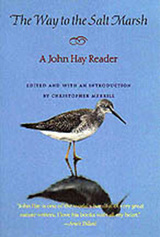
The Way to the Salt Marsh
A John Hay Reader
John Hay
Brandeis University Press, 1998
"In common things are greater extensions of ourselves than we ever conceived of." "Life on earth springs from a collateral magic that we rarely consult," observes John Hay, naturalist, essayist, sage, and inveterate walker of byways. This collection from the 50-year long career of America's preeminent nature writer illustrates the full range of Hay's work. An elegant and lyrical stylist, he is, in Merrill's words, "the nature writer's writer, an illustrator of the Emersonian notion that 'the world is emblematic.'" And so Hay reveals the ubiquitous but often unnoticed emblems all around us. The mad, impossible rush of alewives flinging themselves upstream to mate, for example, represents "the drive to be, a common and terrible sending out, to which men are also bound in helplessness." In the migratory movements of the terns and the green turtles past his beloved Cape Cod Hay sees the mystery and magnificence of homing: "To know your direction and return through outer signs, is as new as it is ancient. We are still people of the planet, with all its original directions waiting in our being." Whether describing the rugosa or bayberry of a sand dune, the plight of stranded pilot whales, or a spider swinging on its gossamer, Hay encourages us to enlarge our inner universe by observing, appreciating, and preserving the outer one we so often ignore. As a result, he says, "we may find that we are being led onto traveled ways that were once invisible to us," and by recognizing our "deep alliance with natural forces we find a new depth in ourselves. This is the common ground for all living things."
[more]
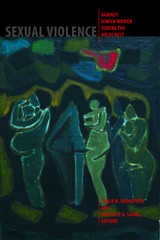
Sexual Violence against Jewish Women during the Holocaust
Sonja M. Hedgepeth
Brandeis University Press, 2010
Using testimonies, Nazi documents, memoirs, and artistic representations, this volume broadens and deepens comprehension of Jewish women’s experiences of rape and other forms of sexual violence during the Holocaust. The book goes beyond previous studies, and challenges claims that Jewish women were not sexually violated during the Holocaust. This anthology by an interdisciplinary and international group of scholars addresses topics such as rape, forced prostitution, assaults on childbearing, artistic representations of sexual violence, and psychological insights into survivor trauma. These subjects have been relegated to the edges or completely left out of Holocaust history, and this book aims to shift perceptions and promote new discourse.
[more]

Representing the French Revolution
Literature, Historiography, and Art
James A. W. Heffernan
Brandeis University Press, 1992
Why is the anniversary of the French Revolution celebrated on July 14, the day the Bastille was stormed, rather than on August 26, the day the Declaration of the Rights of Man was signed? Why don’t the French do as the Americans, who see their revolution epitomized by the signing of the Declaration of Independence? “There is surely something to be learned from contemplating the difference between these two ways of representing a revolution,” writes James Heffernan. In this volume, he and 13 other distinguished scholars consider representations of the French Revolution in literature, historical narratives, and art as central to understanding it. Challenging the idea that history is a body of fact separable from fictions wrought by literature and the visual arts, they show that study of a major historical event inevitably leads to study of representation.
[more]
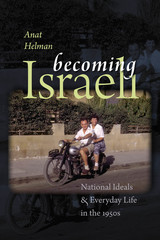
Becoming Israeli
National Ideals and Everyday Life in the 1950s
Anat Helman
Brandeis University Press, 2014
With a light touch and many wonderful illustrations, historian Anat Helman investigates "life on the ground" in Israel during the first years of statehood. She looks at how citizens--natives of the land, longtime immigrants, and newcomers--coped with the state's efforts to turn an incredibly diverse group of people into a homogenous whole. She investigates the efforts to make Hebrew the lingua franca of Israel, the uses of humor, and the effects of a constant military presence, along with such familiar aspects of daily life as communal dining on the kibbutz, the nightmare of trying to board a bus, and moviegoing as a form of escapism. In the process Helman shows how ordinary people adapted to the standards and rules of the political and cultural elites and negotiated the chaos of early statehood.
[more]
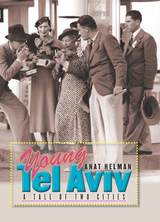
Young Tel Aviv
A Tale of Two Cities
Anat Helman
Brandeis University Press, 2012
Practical Zionism in the Mandate era (1920–1948) is usually associated with agricultural settlements (kibbutzim), organized socialist workers, and the creation of a formal high culture. This book fills a gap in historical research by presenting a different type of practical Zionism in Jewish Palestine—urban, middle-class, and created by popular and informal daily practices. While research on Tel Aviv has so far been confined to “positivist” historical description or focused nostalgically on local myths, Helman’s book reconstructs and analyzes the city’s formative decades on various levels, juxtaposing historical reality with cultural images and ideological doctrines. Topics include the city’s physical portrait, major public events, consumer culture, patterns of leisure and entertainment, and urban subcultures.
[more]
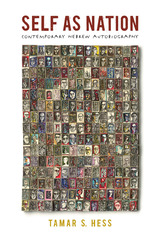
Self as Nation
Contemporary Hebrew Autobiography
Tamar S. Hess
Brandeis University Press, 2016
Theorists of autobiography tend to emphasize the centrality of the individual against the community. By contrast, in her reading of Hebrew autobiography, Tamar Hess identifies the textual presence and function of the collective and its interplay with the Israeli self. What characterizes the ten writers she examines is the idea of a national self, an individual whose life story takes on meaning from his or her relation to the collective history and ethos of the nation. Her second and related argument is that this self—individually and collectively—must be understood in the context of waves of immigration to Israel’s shores. Hess convincingly shows that autobiography is a transnational genre deeply influenced by the nation’s literary as well as cultural history. This book makes an additional contribution to the history of autobiography and contemporary autobiography theory by analyzing the strategies of fragmentation that many of the writers Hess studies have adopted as ways of dealing with the conflicts between the self and the nation, between who they feel they are and what they are expected to be. Hess contrasts the predominantly masculine tradition of Hebrew autobiography with writings by women, and offers a fresh understanding of the Israeli soul and the Hebrew literary canon. A systematic review of contemporary Hebrew autobiography, this study raises fundamental questions essential to the debates about identity at the heart of Israeli culture today. It will interest scholars and students of contemporary Israeli culture, as well as those intrigued by the literary genre of autobiography.
[more]
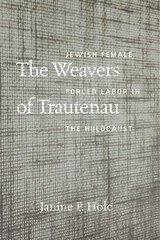
The Weavers of Trautenau
Jewish Female Forced Labor in the Holocaust
Janine P. Holc
Brandeis University Press, 2023
A sympathetic history that focuses on the experiences of women and girls during the Holocaust and draws on new archival sources.
Beginning in late 1940, over three thousand Jewish girls and young women were forced from their family homes in Sosnowiec, Poland, and its surrounding towns to worksites in Germany. Believing that they were helping their families to survive, these young people were thrust into a world where they labored at textile work for twelve hours a day, lived in barracks with little food, and received only periodic news of events back home. By late 1943, their barracks had been transformed into concentration camps, where they were held until liberation in 1945.
Using a fresh approach to testimony collections, Janine P. Holc reconstructs the forced labor experiences of young Jewish females, as told by the women who survived and shared their testimony. Incorporating new source material, the book carefully constructs survivors’ stories while also taking a theoretical approach, one alert to socially constructed, intersectional systems of exploitation and harm. The Weavers of Trautenau elucidates the limits and possibilities of social relations inside camps and the challenges of moral and emotional repair in the face of indescribable loss during the Holocaust.
Beginning in late 1940, over three thousand Jewish girls and young women were forced from their family homes in Sosnowiec, Poland, and its surrounding towns to worksites in Germany. Believing that they were helping their families to survive, these young people were thrust into a world where they labored at textile work for twelve hours a day, lived in barracks with little food, and received only periodic news of events back home. By late 1943, their barracks had been transformed into concentration camps, where they were held until liberation in 1945.
Using a fresh approach to testimony collections, Janine P. Holc reconstructs the forced labor experiences of young Jewish females, as told by the women who survived and shared their testimony. Incorporating new source material, the book carefully constructs survivors’ stories while also taking a theoretical approach, one alert to socially constructed, intersectional systems of exploitation and harm. The Weavers of Trautenau elucidates the limits and possibilities of social relations inside camps and the challenges of moral and emotional repair in the face of indescribable loss during the Holocaust.
[more]
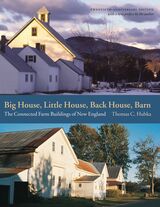
Big House, Little House, Back House, Barn
The Connected Farm Buildings of New England
Thomas C. Hubka
Brandeis University Press, 2022
A classic work on farm buildings made by nineteenth-century New Englanders refreshed with a new introduction.
Big House, Little House, Back House, Barn portrays the four essential components of the stately and beautiful connected farm buildings made by nineteenth-century New Englanders that stand today as a living expression of a rural culture, offering insights into the people who made them and their agricultural way of life. A visual delight as well as an engaging tribute to our nineteenth-century forebears, this book, first published nearly forty years ago, has become one of the standard works on regional farmsteads in America. This new edition features a new preface by the author.
Big House, Little House, Back House, Barn portrays the four essential components of the stately and beautiful connected farm buildings made by nineteenth-century New Englanders that stand today as a living expression of a rural culture, offering insights into the people who made them and their agricultural way of life. A visual delight as well as an engaging tribute to our nineteenth-century forebears, this book, first published nearly forty years ago, has become one of the standard works on regional farmsteads in America. This new edition features a new preface by the author.
[more]
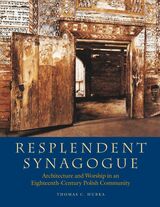
Resplendent Synagogue
Architecture and Worship in an Eighteenth-Century Polish Community
Thomas C. Hubka
Brandeis University Press, 2022
This unique exploration of a lost religious and cultural artifact breathes new life into a forgotten but fascinating aspect of eighteenth-century Polish Jewry.
Thomas C. Hubka, an architectural historian, immersed himself in medieval and early modern Jewish history, religion, and culture to prepare for this remarkable study of the eighteenth-century Polish synagogue in the town of Gwozdziec, now in present-day Ukraine. Because the Gwozdziec Synagogue, like so many others, was destroyed by the Nazis, this book revives a spiritual community lost to history. Hubka selected the Gwozdziec Synagogue because of the completeness of its photographic and historical records. Graced with nearly two hundred historical photographs, architectural drawings, maps, diagrams, and color illustrations, Resplendent Synagogue vividly recreates the spiritual heart of a once-vibrant Jewish population. Hubka demonstrates that while the architectural exterior of the synagogue was largely the product of non-Jewish, regional influences, the interior design and elaborate wall-paintings signified a distinctly Jewish art form. The collaboration of Jewish and Gentile builders, craftsmen, and artists in the creation of this magnificent wooden structure attests to an eighteenth-century period of relative prosperity and communal well-being for the Jews of Gwozdziec. Part of a tradition that was later abandoned by Eastern European Jewish communities in the nineteenth and twentieth centuries, this truly resplendent synagogue exemplified a high point in Jewish architectural art and religious painting.
Thomas C. Hubka, an architectural historian, immersed himself in medieval and early modern Jewish history, religion, and culture to prepare for this remarkable study of the eighteenth-century Polish synagogue in the town of Gwozdziec, now in present-day Ukraine. Because the Gwozdziec Synagogue, like so many others, was destroyed by the Nazis, this book revives a spiritual community lost to history. Hubka selected the Gwozdziec Synagogue because of the completeness of its photographic and historical records. Graced with nearly two hundred historical photographs, architectural drawings, maps, diagrams, and color illustrations, Resplendent Synagogue vividly recreates the spiritual heart of a once-vibrant Jewish population. Hubka demonstrates that while the architectural exterior of the synagogue was largely the product of non-Jewish, regional influences, the interior design and elaborate wall-paintings signified a distinctly Jewish art form. The collaboration of Jewish and Gentile builders, craftsmen, and artists in the creation of this magnificent wooden structure attests to an eighteenth-century period of relative prosperity and communal well-being for the Jews of Gwozdziec. Part of a tradition that was later abandoned by Eastern European Jewish communities in the nineteenth and twentieth centuries, this truly resplendent synagogue exemplified a high point in Jewish architectural art and religious painting.
[more]
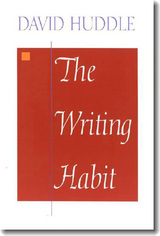
The Writing Habit
David Huddle
Brandeis University Press, 1994
Facing the blank page of the empty computer screen requires an unswerving belief in possibility, a steadfast assurance that something can and will come out of nothing. In The Writing Habit, David Huddle demystifies the writing task and shows that what may seem like alchemy is in reality a habit: the work itself, not magic, unlocks the writer’s potential. “A real writing life is not something you do merely for a day or a month or a year,” Huddle asserts. “For a writer, the one truly valuable possession is the ongoing work--the writing habit, which may take some getting used to, but which soon becomes so natural as to be almost inevitable.” Drawing from his own experience as a teacher and writer of poetry, fiction, and essays, Huddle explores the questions all writers--from novice to professional--face: Why write in the first place? How can writers fashion their lives to accommodate that all-important habit? What are some ways to deal with failure? What roles do memory, reality, and inspiration play in the creative process? How can prose best be crafted, characters brought alive, universal truths revealed from the bits and pieces of everyday life?
[more]
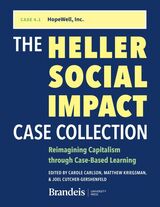
CASE 4.1 HopeWell, Inc.
Della M. Hughes
Brandeis University Press, 2024
This case explores the work of leaders and staff at Hopewell, an innovative social services nonprofit, to evolve its services and achieve organizational alignment. It includes an in-depth discussion of the use of theory of change and logic models to support transformative change. It also discusses how Hopewell aligned its transformation to organizational values and leveraged and aligned staff to create consensus. This is an excellent case for exploring transformational leadership or organizational change in a nonprofit setting. use a logic model to evolve its services. It includes an in-depth discussion of the use of theory of change and logic models to support transformative change. It also discusses how it aligned its transformation to organizational values and leveraged and aligned staff to create consensus. This case enables instructors to illustrate the value of using a theory of change and logic model to articulate the strategy of and drive change in a high-performance social venture.
[more]
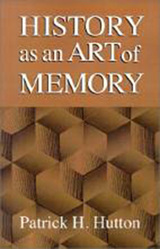
History as an Art of Memory
Patrick H. Hutton
Brandeis University Press, 1993
With a broad, interdisciplinary command of the subject, Patrick H. Hutton considers the ideas of philosophers, poets, and historians, focusing especially on the work of Giambattista Vico, Maurice Halbwachs, Philippe Ariès, and Michel Foucault. He surveys such questions as the roots of contemporary historical interest in the memory topic, the eternal paradox of repetition and recollection as moments of memory,the ways in which the art of memory has been refashioned to serce the needs of the modern age and becomes integrated into historical thinking, and historians’ changing attitudes toward the historiographical tradition of scholarship on the French Revolution.
[more]
READERS
Browse our collection.
PUBLISHERS
See BiblioVault's publisher services.
STUDENT SERVICES
Files for college accessibility offices.
UChicago Accessibility Resources
home | accessibility | search | about | contact us
BiblioVault ® 2001 - 2024
The University of Chicago Press









